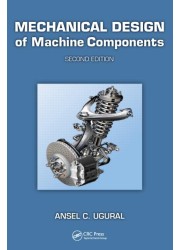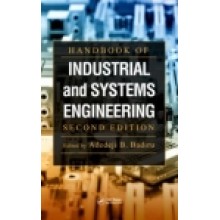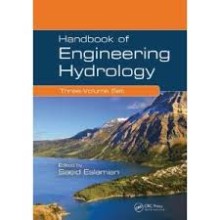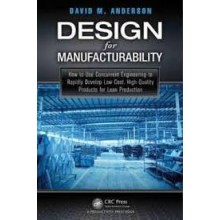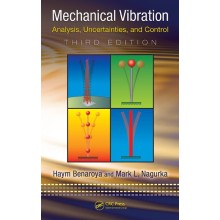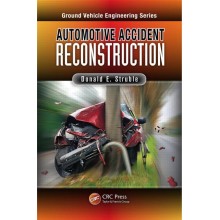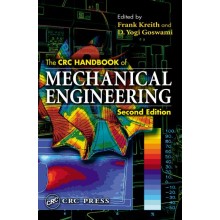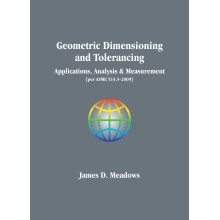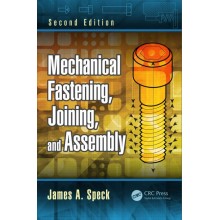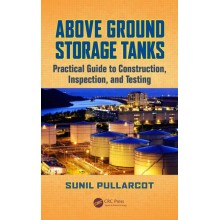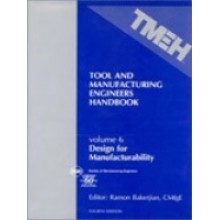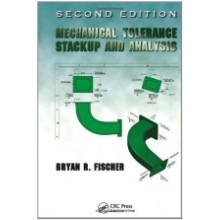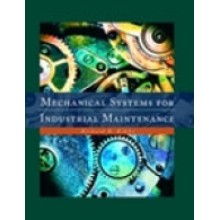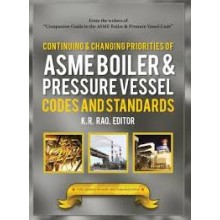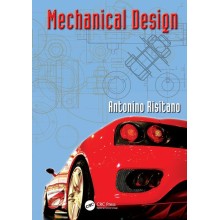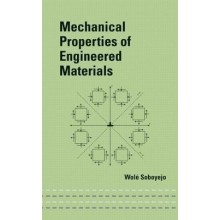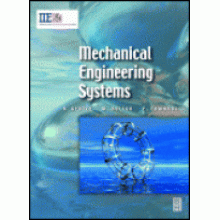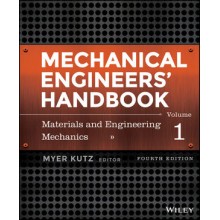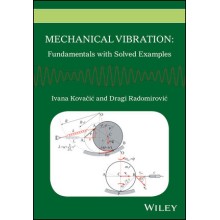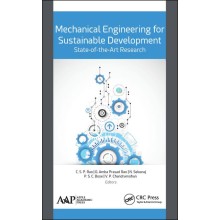Mechanical Design of Machine Components 2nd Edition
Our Price: £103.50
Discount : 10%
Quantity:
Add to Compare
Mechanical Design of Machine Components, Second Edition strikes a balance between theory and application, and prepares students for more advanced study or professional practice. It outlines the basic concepts in the design and analysis of machine elements using traditional methods, based on the principles of mechanics of materials. The text combines the theory needed to gain insight into mechanics with numerical methods in design. It presents real-world engineering applications, and reveals the link between basic mechanics and the specific design of machine components and machines.
Divided into three parts, this revised text presents basic background topics, deals with failure prevention in a variety of machine elements and covers applications in design of machine components as well as entire machines. Optional sections treating special and advanced topics are also included.
Key Features of the Second Edition:
- Incorporates material that has been completely updated with new chapters, problems, practical examples and illustrations
- Places a strong emphasis is on the fundamentals of mechanics of materials as they relate to the study of machine design
- Provides thorough coverage of machine components, including their applications in modern engineering, and some discussion of entire machines
- Presents material selection charts and tables as an aid in specific applications
- Contains selective chapters that include case studies of various components and machines, as well as some open-ended problems
- Includes applied finite element analysis in design, offering an introduction to this useful tool for computer-oriented examples
- Addresses the ABET design criteria in a systematic manner
- Covers optional MATLAB solutions tied to the book and student learning resources on the CRC website
Mechanical Design of Machine Components, Second Edition helps you gain a grasp of the fundamentals of machine design and the ability to apply these fundamentals to new engineering problems.
Table of Contents
Section I Basics
Introduction
Scope of the Book
Mechanical Engineering Design
Design Process
Design Analysis
Problem Formulation and Computation
Factor of Safety and Design Codes
Units and Conversion
Loading Classes and Equilibrium
Free-Body Diagrams and Load Analysis
Case Studies in Engineering
Work, Energy, and Power
Stress Components
Normal and Shear Strains
Problems
Materials
Introduction
Material Property Definitions
Static Strength
Hooke’s Law and Modulus of Elasticity
Generalized Hooke’s Law
Thermal Stress–Strain Relations
Temperature and Stress–Strain Properties
Moduli of Resilience and Toughness
Dynamic and Thermal Effects
Hardness
Processes to Improve Hardness and the Strength of Metals
General Properties of Metals
General Properties of Nonmetals
Problems
Stress and Strain
Introduction
Stresses in Axially Loaded Members
Direct Shear Stress and Bearing Stress
Thin-Walled Pressure Vessels
Stress in Members in Torsion
Shear and Moment in Beams
Stresses in Beams
Design of Beams
Plane Stress
Combined Stresses
Plane Strain
Measurement of Strain; Strain Rosette
Stress-Concentration Factors
Importance of Stress-Concentration Factors in Design
Three-Dimensional Stress
Equations of Equilibrium for Stress
Strain–Displacement Relations: Exact Solutions
Problems
Deflection and Impact
Introduction
Deflection of Axially Loaded Members
Angle of Twist of Shafts
Deflection of Beams by Integration
Beam Deflections by Superposition
Beam Deflection by the Moment-Area Method
Impact Loading
Longitudinal and Bending Impact
Torsional Impact
Bending of Thin Plates
Deflection of Plates by Integration
Problems
Energy Methods and Stability
Introduction
Strain Energy
Strain Energy in Common Members
Work–Energy Method
Castigliano’s Theorem
Statically Indeterminate Problems
Virtual Work Principle
Use of Trigonometric Series in Energy Methods
Buckling of Columns
Critical Stress in a Column
Initially Curved Columns
Eccentric Loads and the Secant Formula
Design Formulas for Columns
Beam–Columns
Energy Methods Applied to Buckling
Buckling of Rectangular Plates
Problems
Section II Failure Prevention
Static Failure Criteria and Reliability
Introduction
Introduction to Fracture Mechanics
Stress–Intensity Factors
Fracture Toughness
Yield and Fracture Criteria
Maximum Shear Stress Theory
Maximum Distortion Energy Theory
Octahedral Shear Stress Theory
Comparison of the Yielding Theories
Maximum Principal Stress Theory
Mohr’s Theory
Coulomb–Mohr Theory
Reliability
Normal Distributions
Reliability Method and Margin of Safety
Problems
Fatigue Failure Criteria
Introduction
Nature of Fatigue Failures
Fatigue Tests
S–N Diagrams
Estimating the Endurance Limit and Fatigue Strength
Modified Endurance Limit
Endurance Limit Reduction Factors
Fluctuating Stresses
Theories of Fatigue Failure
Comparison of the Fatigue Criteria
Design for Simple Fluctuating Loads
Design for Combined Fluctuating Loads
Prediction of Cumulative Fatigue Damage
Fracture Mechanics Approach to Fatigue
Problems
Surface Failure
Introduction
Corrosion
Friction
Wear
Wear Equation
Contact-Stress Distributions
Spherical and Cylindrical Surfaces in Contact
Maximum Stress in General Contact
Surface-Fatigue Failure
Prevention of Surface Damage
Problems
Section III Applications
Shafts and Associated Parts
Introduction
Materials Used for Shafting
Design of Shafts in Steady Torsion
Combined Static Loadings on Shafts
Design of Shafts for Fluctuating and Shock Loads
Interference Fits
Critical Speed of Shafts
Mounting Parts
Stresses in Keys
Splines
Couplings
Universal Joints
Problems
Bearings and Lubrication
Introduction
Part A: Lubrication and Journal Bearings
Lubricants
Types of Journal Bearings
Forms of Lubrication
Lubricant Viscosity
Petroff’s Bearing Equation
Hydrodynamic Lubrication Theory
Design of Journal Bearings
Lubricant Supply to Journal Bearings
Heat Balance of Journal Bearings
Materials for Journal Bearings
Part B: Rolling-Element Bearings
Types and Dimensions of Rolling Bearings
Rolling Bearing Life
Equivalent Radial Load
Selection of Rolling Bearings
Materials and Lubricants of Rolling Bearings
Mounting and Closure of Rolling Bearings
Problems
Spur Gears
Introduction
Geometry and Nomenclature
Fundamentals
Gear Tooth Action and Systems of Gearing
Contact Ratio and Interference
Gear Trains
Transmitted Load
Bending Strength of a Gear Tooth: The Lewis Formula
Design for the Bending Strength of a Gear Tooth: The AGMA Method
Wear Strength of a Gear Tooth: The Buckingham Formula
Design for the Wear Strength of a Gear Tooth: The AGMA Method
Materials for Gears
Gear Manufacturing
Problems
Helical, Bevel, and Worm Gears
Introduction
Helical Gears
Helical Gear Geometry
Helical Gear Tooth Loads
Helical Gear Tooth Bending and Wear Strengths
Bevel Gears
Tooth Loads of Straight Bevel Gears
Bevel Gear Tooth Bending and Wear Strengths
Worm Gearsets
Worm Gear Bending and Wear Strengths
Thermal Capacity of Worm Gearsets
Problems
Belts, Chains, Clutches, and Brakes
Introduction
Part A: Flexible Elements
Belts
Belt Drives
Belt Tension Relationships
Design of V-Belt Drives
Chain Drives
Common Chain Types
Part B: High Friction Devices
Materials for Brakes and Clutches
Internal Expanding Drum Clutches and Brakes
Disk Clutches and Brakes
Cone Clutches and Brakes
Band Brakes
Short-Shoe Drum Brakes
Long-Shoe Drum Brakes
Energy Absorption and Cooling
Problems
Mechanical Springs
Introduction
Torsion Bars
Helical Tension and Compression Springs
Spring Materials
Helical Compression Springs
Buckling of Helical Compression Springs
Fatigue of Springs
Design of Helical Compression Springs for Fatigue Loading
Helical Extension Springs
Torsion Springs
Leaf Springs
Miscellaneous Springs
Problems
Power Screws, Fasteners, and Connections
Introduction
Standard Thread Forms
Mechanics of Power Screws
Overhauling and Efficiency of Power Screws
Ball Screws
Threaded Fastener Types
Stresses in Screws
Bolt Tightening and Preload
Tension Joints under Static Loading
Gasketed Joints
Determining the Joint Stiffness Constants
Tension Joints under Dynamic Loading
Riveted and Bolted Joints Loaded in Shear
Shear of Rivets or Bolts due to Eccentric Loading
Welding
Welded Joints Subjected to Eccentric Loading
Brazing and Soldering
Adhesive Bonding
Problems
Miscellaneous Mechanical Components
Introduction
Basic Relations
Thick-Walled Cylinders under Pressure
Compound Cylinders: Press or Shrink Fits
Disk Flywheels
Thermal Stresses in Cylinders
Exact Stresses in Curved Beams
Curved Beam Formula
Circular Plates
Thin Shells of Revolution
Special Cases of Shells of Revolution
Pressure Vessels and Piping
Filament-Wound Pressure Vessels
Buckling of Cylindrical and Spherical Shells
Problems
Finite Element Analysis in Design
Introduction
Bar Element
Formulation of the Finite Element Method
Beam and Frame Elements
Two-Dimensional Elements
Triangular Element
Plane Stress Case Studies
Axisymmetric Element
Problems
Case Studies in Machine Design
Introduction
Floor Crane with Electric Winch
High-Speed Cutter
Problems
Appendices
Answers to Selected Problems
References
Index
Copyright © 2014 Engineering Standards Bureau. All Rights Reserved.
Developed By Zoom Into Web


